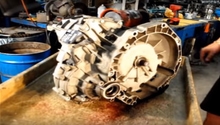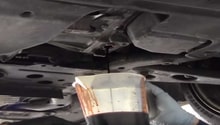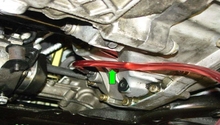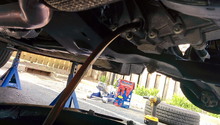Mini Cooper 2001-2013: Automatic Transmission Diagnostic Guide
The transmission is one of the most expensive components in your Mini Cooper. Read on to learn how to diagnose it.
This article applies to the 1st and 2nd generation Mini Cooper (2001-2013).
There are a few things that can go wrong with your Mini Cooper's transmission that would cause it to act up. If your car is hesitating, failing to go into other gears, making grinding noises, or lagging when shifting, then you have a transmission problem. Don't be intimidated, though; although the transmission is a complicated item, it can be diagnosed by following a few steps. If you're facing any issues with your Mini Cooper's transmission, then read on to learn how you can diagnose it yourself.

Materials Needed
- 8mm hex head
- Jack and jack stands
- Flashlight
Step 1 – Check transmission fluid
It could be low or old.
When in doubt, check the transmission fluid. The transmission fluid is a critical components to the health of your transmission. It keeps the inside of the transmission lubricated to protect all the internal gears. Whenever you have any issue with your transmission, check the fluid. If the transmission fluid is low or if it looks extremely dark, then it needs to be refilled or replaced. Low or old transmission fluid can cause your transmission to grind or even get stuck in gears. Unlike some cars, the Mini Cooper is not equipped with a transmission dipstick; instead, you have to use the fill plug on the transmission's oil pan to check the fluid. Raise the car and secure it with jack stands, then use your 8mm hex head to remove the fill plug. Put your finger into the fill plug, and the fluid should be right there. If you can't reach the fluid, then it's too low. If the fluid is too dark, then you are due fora transmission fluid replacement.

If the transmission fluid is in proper order, proceed to Step 2.
Step 2 – Check transmission filter
It could be dirty and clogged.
The transmission filter is known to be replaced whenever you perform a transmission fluid replacement. When your transmission filter gets dirty and clogged, you will start noticing lagging when shifting, and a lot of customers claimed their transmission got stuck in certain gears. The transmission filter is located inside the transmission fluid panel, so you will have to drain the transmission fluid, remove the transmission oil pan, then inspect and change the filter/screen.

If the transmission filter is in a good condition, proceed to Step 3.
Step 3 – Check transmission wiring
They could be worn or cracked.
The transmission has wiring connections all over it. Some wires are connected to sensors, which are designed to detect transmission issues and report them to you, and other wires are connected to the transmission to give it signals and power. Damaged wiring will compromise the transmission's performance and cause any number of issues. Raise your Mini Cooper and support it on jack stands, then use your flashlight to inspect all the wires connected to your transmission. Some of them are connected with a wiring harness, so make sure they are connected properly and not loose. If you find any bad wires, which can be caused from rough weather conditions, replace the them so your transmission can receive the proper signal.

Pro Tip
If you have extreme grinding noises, then your gears could be damaged. It's recommended you visit a professional for such problems, because you need to take the transmission apart and replace the internal worn parts.
Related Discussions
- Auto Trans Problem - NorthAmericanMotoring.com
- Transmission Failed - NorthAmericanMotoring.com
- Transmission Squeal - NorthAmericanMotoring.com
- Transmission Problems - NorthAmericanMotoring.com
- Cooper-S Auto Transmission Problem - NorthAmericanMotoring.com






